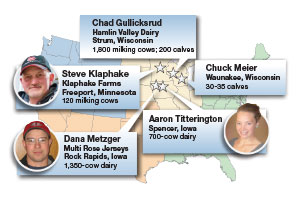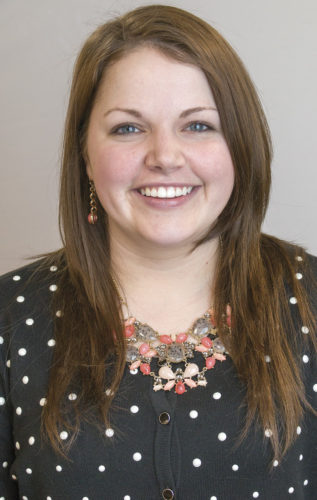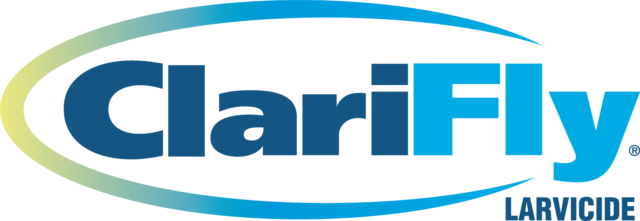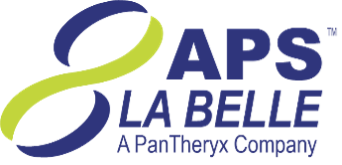This article was #18 of the Top 25 most well-read articles on www.progressivedairy.com in 2013. It was published in the Nov. 21, 2012 print issue. Click here for the full list of the Top 25. This roundtable, the final in a three-part series, featured five Midwest producers using automatic calf feeders. The producers described factors they considered, challenges they had with installation and lessons learned with the feeders. We asked the producers: Q. If you were given unlimited resources (time, labor, money, land, etc.), what is one change you would make to your calf-raising program and why?
“If I would have had unlimited resources, I would have built my current facility larger to accommodate my calves to 3 to 4 months old. It is so convenient for feeding, cleaning and handling the animals, and it would be nice to keep them in the facility longer. Also if we were to expand, it would be easy to accommodate another set of feeders to handle calves still on milk. We never seem to build anything big enough.”
—Chad Gullicksrud, Hamlin Valley Dairy, Strum, Wisconsin
“I would build a larger building so the pens could be larger and the calves would have more room to run around. I would also add a few more automatic feeders, and we could use more storage area for the supplies. I would put in more underground tubes for geo-thermoventilation for better air flow for the animals. What we have is working well, but improvements can always help the efficiency of the equipment, building and the health of the calves.”
—Chuck Meier, dairy producer, Waunakee, Wisconsin
“If I could change anything at this time and had unlimited resources, I would invest in new facilities for the calves on the automatic feeder instead of trying to retrofit and remodel an old building. It doesn’t mean I wouldn’t do a warm, power-ventilated barn, but I would design it how we want it with the knowledge we have now. I would also add new housing for calves from weaning to 6 months old, as this is our next project to complete in the coming year.”
—Dana Metzger, dairy producer, Rock Rapids, Iowa
“I would connect our transition barn to the calf facilities. I’d set it up so that the pasteurized milk from our hospital cows and freshening cows could be piped right to the calves. From previous experience, I’ve seen the advantage of pasteurized milk over milk replacer, especially for calves three weeks and younger. With the close proximity, those caring for calves could check for and care for newborn calves, bring newborns to the calf facilities with ease and not spend time hauling milk.”
—Aaron Titterington, calf manager, Spencer, Iowa
ARTICLE :
Editor’s note: This is the third and final article in a series of roundtable articles about automatic calf feeders.

Responses are from:
• Chad Gullicksrud of Strum, Wisconsin
Gullicksrud oversees the calf and heifer raising at Hamlin Valley Dairy, an operation milking 1,800 cows. The farm feeds 200 calves on four DeLaval units.
• Steve Klaphake of Freeport, Minnesota
Klaphake farms with his two sons on their 120-cow “totally robotic” operation. A Lely CALM automatic calf feeder was a natural fit after the family installed two robotic milking units and an automatic feed pusher.
• Chuck Meier of Waunakee, Wisconsin
Meier raises 30-35 calves on a Holm & Laue feeder. Calf Star national sales manager Tom Olsen says the calf facility utilizes a unique geo-thermal ventilation system.
• Dana Metzger of Rock Rapids, Iowa
Multi Rose Jerseys was one of the first farms to purchase an automatic calf feeder from GEA Farm Technologies in April 2009. When the now 1,350-cow dairy expanded their operation in 2011, the Metzger family put in an additional four feeders. Dana Metzger says his family also raises 7,000 hogs.
• Aaron Titterington of Spencer, Iowa
Titterington manages the calves on her family’s 700-cow Jersey operation. She says she raises 350 heifers a year and decided to try out used feeders when they come available for sale. After having success with two Urban “Calf Mom” feeders in a retrofitted facility, Titterington has purchased a new, third unit and the farm is constructing an addition to the calf facilities.

Why did you begin looking at the technology? What factors did you consider?
GULLICKSRUD: We were running out of space in our old facility. When we looked at a new calf barn, we also started looking at new ways to feed calves. We really like the DeLaval model because we were able to see how the calves were doing on an individual basis. Plus our local dealer was very familiar with these units.
KLAPHAKE: The calf feeder was an afterthought after putting in the robots, but it’s definitely been a huge benefit. It’s made our lives a lot easier and the calves are being fed much better.
MEIER: Our calf condos were about 15 years old and we were building a new facility. We saw some feeders at Wisconsin Farm Technology Days and started looking into them. I really liked the pump being at the station with the Holm & Laue feeder, so it pulls the milk right to the nipple and it’s easier on the calves. I also thought this machine was more of what we wanted as far as tracking data and keeping records.
METZGER: We’re always looking for ways to be more efficient and the use of technology is one way to do that. In 2009, we were looking to make some changes in the way we raised baby calves. A feed consultant recommended we take a look at automatic feeders as they were starting to take off here in the U.S.
We have a local GEA dealer, so we went with that brand. When we expanded the dairy, we renovated an old hog barn to be a calf facility. The barn has a heated tri-bar floor and power ventilation, and this helps with savings in labor and bedding.
TITTERINGTON: We raised calves successfully in hutches in a barn but labor and being tied to three feedings a day on a strict schedule, as well as hand-bedding individual hutches, is what prompted me to look into the automatic feeders.
We eased into the group feeding: for the first year and a half, we raised all calves individually in hutches until 2 weeks old. At that time, calves moved in groups of 12 to 16 to the automatic feeders and stayed there until weaning.
This allowed us to first of all get used to managing calves in a group situation, but also to see the benefits of the group housing and really appreciate the flexible schedule of monitoring and teaching the calves.
This past spring, we went to starting calves on the feeder at 1 day old and have added an additional automatic feeder to eliminate hutches completely from our calf-raising program.

What were some of your biggest learning curves with automatic calf feeders?
GULLICKSRUD: We had to learn not to push the calves too much. We needed to let them learn on their own and from each other. If we were in there every day, helping them along, they became dependent on us. We also had to figure out which data sets from the computer were valuable for us and stick to monitoring those.
KLAPHAKE: We’ve had some issues with cleanliness and maintenance is key here. We clean the nipples on the feeder every day and replace them when they start to get worn out. We put new hose lines in every three days. But everything else related to the feeder, we adjusted to pretty quickly.
We check data every morning and every evening. If a calf hasn’t been eating, we’re able to find her and treat her, if needed, before it’s a serious issue.
MEIER: We were having some issues with the milk replacer. We figured out we needed a water softener and that we needed to raise the temperature of the milk before it went to the calves. But the dealers have been great about working with us to quickly fix problems.
METZGER: From the beginning, we had a certain way we wanted to feed our calves. We raise them individually until they’re a week to 10 days old, and then we put them on the feeder. This gets them through any early health challenges and gets them sucking aggressively, which helps them find the feeder faster. Usually after about three times of putting them in the nursing stall, they can find it themselves.
We had to get used to the routine maintenance of the feeders – keeping hoses clean and changing nipples that are worn – and also using the calves’ intake graph to indicate which calves may be getting sick.
The feeders are definitely labor savers since one or two people can handle all the work for the 200 calves on milk we have at any given time.
TITTERINGTON: Since it’s a European design, I had to get used to the metric conversions. I think anyone buying the equipment new would have had the dealer support to walk them through those steps. I also found that I needed to change my management schedule; I needed to be better at observing the calves and take note of who wasn’t drinking well.

What’s the number one thing you wish you would have known before putting in your automatic feeder?
GULLICKSRUD: We toured quite a few other operations before putting in our feeders, but one thing that wasn’t in the thought process prior was whole milk. We had to learn how to cool the milk down more quickly to keep it cleaner going to the calves. We feed with both whole milk and with milk replacer. We’ve been really pleased with the consistency of the feeder. The milk temperature is always what we need it to be.
KLAPHAKE: We felt really prepared going into the switch to robotic technology. We had a well-ventilated barn with continuous air flow. Calves are divided into two group pens, one for each side of the station, and are typically bedded once a week.
MEIER: I wish I would have known more about the programming on the software. We had to figure out how to back up the memory. I don’t currently have the feeder set up to track a lot, but it’s something I can go in and adjust when we’re ready to go to the next level.
METZGER: The company had weaning set over a three-day window. We changed it to a gradual drop over a week’s time. This causes less sucking and a gradual rise in intake of starter feed. This has cause the transition at weaning to go a lot smoother.
TITTERINGTON: The barn we retrofitted didn’t meet the recommended resting space requirement. I knew that I didn’t have the space to meet the specs, but I decided to try it anyway. We tried higher numbers in the space and sensed that we were really pushing air quality and the amount of uninterrupted rest the calves were getting, so we backed off. Now we are allowing 27 square feet per calf.

What has been the biggest benefit for your operation with the feeders?
GULLICKSRUD: We’ve been able to decrease our labor by two-and-a-half workers simply because of the efficiency of the machines. The bigger benefit has been the rate of gain.
Before the automatic feeders, we were at one pound a day and now we’re up to two. The record aspect of it has made it much easier to track what I’m doing, check my results and, if needed, go back and change it for the next group of calves.
KLAPHAKE: We have a simple design here where we have the milking robots and the calves and feeder all in the same barn. So it’s really easy for me to go from one thing to another and I’m able to do a lot of the work myself. I also think the calves are better cared for.
They’re getting fed better and I definitely look at them more than when we had calves in hutches. The gains are unreal and, when the calves leave the barn and are weaned, they’re in great shape.
MEIER: The health of the calves is a lot better but probably the greatest benefit is just watching the calves interact with one another. They watch and learn from each other and, because of that, I think they learn faster. They grow a lot faster too.
METZGER: We realize that calves grow the most efficiently at this age, so we try to provide the best nutrition to optimize this to its fullest potential. The automatic feeders allow us to be more labor-efficient as our calf needs have grown and also help us raise big, healthy calves. We see less issues with clostridium because the calf can drink less, more often, instead of a larger amount on two feedings.
Our goal was to double their birthweight in the first 60 days. Recently a consultant encouraged us to increase the rate of milk feed to see even greater performance in the first 60 days. So we went from 5.2 liters to 7.0 liters per calf per day. They claim the calf will be healthier, bigger, bred earlier and put more in the tank as a 2-year-old!
TITTERINGTON: The biggest benefit is the convenience of not being tied to an exact schedule. I can help new calves drink and look through alarms around other work or family time. With the hutches, we needed to be right on time because the calves were hungry and waiting.
After doing some figuring, we actually cut our calf labor by a third. It didn’t seem like it at first when we were getting used to things and making so many adjustments but, now that we are running smoothly, it is less time than what we spent on hutch calves. PD







